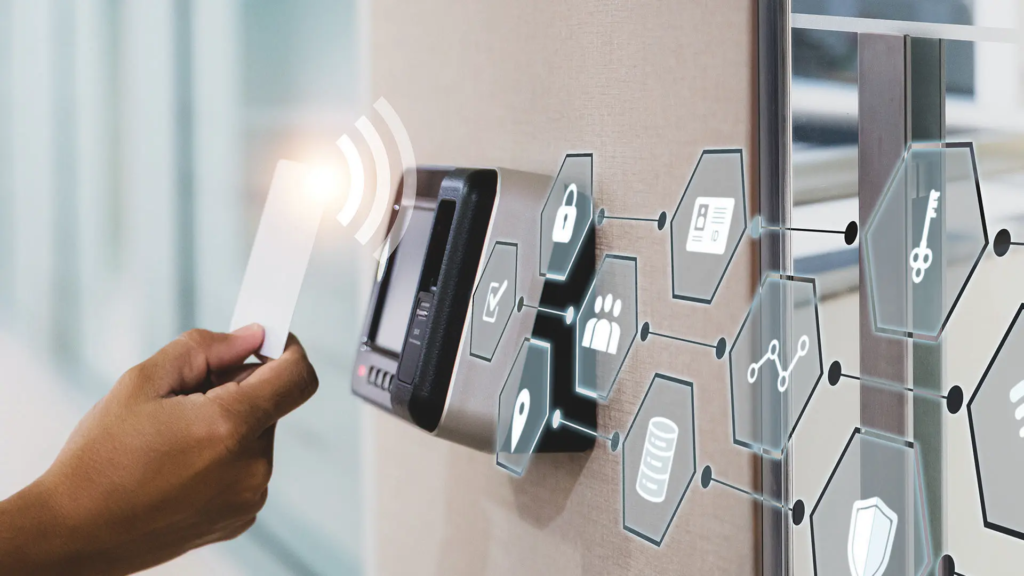
can proximity card be demagnetized
A proximity card operates using radio frequency identification (RFID) technology. Unlike magnetic stripe cards, it does not rely on a magnetically encoded strip. Instead, it features an embedded antenna and chip that transmit a unique identification signal to a compatible reader. These cards function at low frequencies, typically around 125 kHz, and allow users to gain access by simply tapping or waving the card near a reader. Despite the absence of magnetic stripes, some users still wonder: Can a proximity card be demagnetized? Technically, no. Since there’s no magnetic stripe to corrupt, standard magnetic fields from devices like smartphones, speakers, or even magnets do not affect the card’s operation.
Common Misconceptions About Demagnetization and RFID Cards
The term “demagnetization” is often misapplied to proximity cards. Many people equate them with hotel keycards or old-school ID cards that used magnetic stripes. However, a proximity card is immune to damage from traditional magnetic fields. This resilience stems from its use of microchips and antennae rather than iron oxide film.
Still, damage can occur from extreme environmental conditions. High heat, physical bending, or exposure to intense electromagnetic pulses might harm the internal chip. In some rare instances, interference from metal surfaces or electronic noise can also reduce read range or disrupt function. But this is not demagnetization in the technical sense.

Real Threats to Proximity Card Functionality
While you don’t need to worry about magnets, there are legitimate threats to a proximity card’s performance. Physical wear, moisture exposure, and card bending can break the internal antenna or circuitry. These types of mechanical failure are far more common than any magnetic issue.
Additionally, placing the card near powerful industrial equipment may introduce radio frequency interference. This could hinder communication between the card and the reader. For best performance, users should store proximity cards in protective sleeves and avoid keeping them with metal objects that could block signals.
How to Protect and Maintain Your Proximity Card
Taking simple precautions can significantly extend the life of a proximity card. Store the card flat and avoid bending or twisting it. Use badge holders or lanyards for daily wear, especially in high-traffic environments, such as workplaces. Avoid contact with liquids, which may damage the embedded chip if moisture seeps in through a crack.
Additionally, it is advisable to keep the card away from static-charged surfaces and extreme temperatures. Routine inspections can identify early signs of damage, such as cracks or fading, allowing for timely replacement and preventing further deterioration. These habits ensure uninterrupted access and long-term reliability.

Comparing Proximity Cards with Magnetic Stripe and Smart Cards
Understanding the key differences between a proximity card and other card types helps clear up confusion. Magnetic stripe cards store data in a magnetic form, making them susceptible to demagnetization. In contrast, proximity cards communicate wirelessly through RFID, and smart cards use even more advanced chip technology.
Each card type serves a specific role. Magnetic stripe cards are now largely obsolete due to vulnerability and wear. Smart cards support encryption and are ideal for secure transactions. Proximity cards strike a balance, offering contactless access with solid reliability, making them suitable for ID and entry management.
Troubleshooting Malfunctioning Proximity Cards
When a proximity card fails, users may assume it has been demagnetized. In reality, the chip or antenna has likely been damaged. Begin troubleshooting by trying the card on a different reader. If it works there, the issue may lie in the original reader’s power source or calibration.
If the card fails on multiple readers, examine its surface for damage. If the card appears physically intact but still fails, internal circuit failure is the most probable cause. At this point, replacement is often more cost-effective than repair. Keeping a few spares on hand can prevent disruptions to access.

Reissuing and Managing Damaged Proximity Cards
Organizations that rely heavily on proximity card systems must develop protocols for reissuing damaged or lost cards. Admin dashboards connected to access systems often allow quick deactivation and reactivation of new cards. This is vital for maintaining security and limiting unauthorized access.
Bulk issuance programs also help manage large numbers of employees or students. Some systems even support remote provisioning of new cards, streamlining operations. Overall, good proximity card management boosts access control efficiency while minimizing risk and downtime.
The induction card cannot be demagnetized
Can a proximity card be demagnetized? The simple answer is no. These cards utilize RFID chips and antennae, rather than magnetic stripes. While magnets pose no real threat, physical damage or interference can still impact performance. That said, proper care and handling extend the card’s life. With increasing reliance on access automation, proximity cards remain a trusted tool. By understanding their strengths and limitations, users can ensure optimal function.


